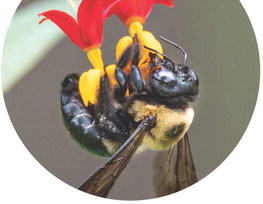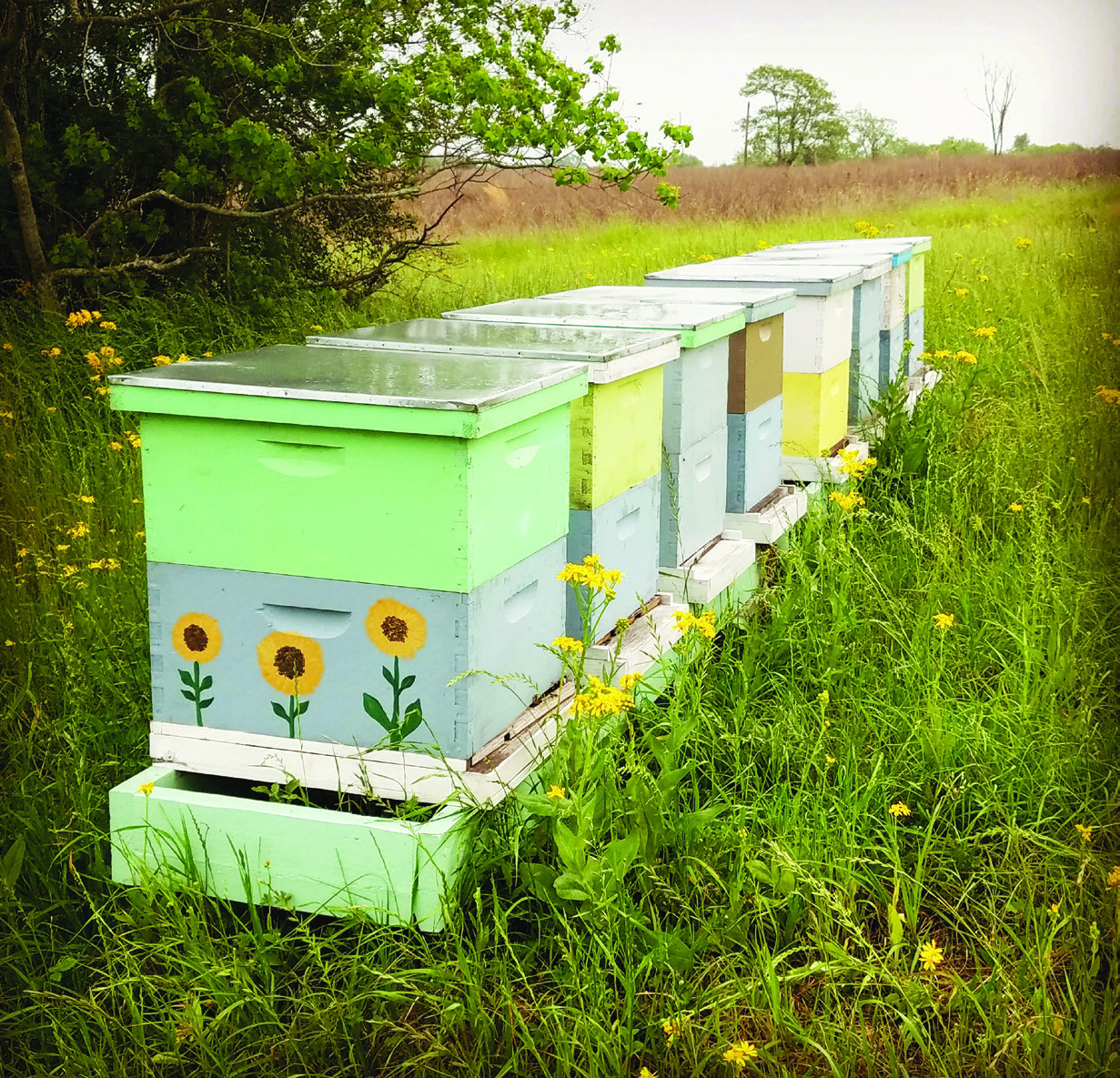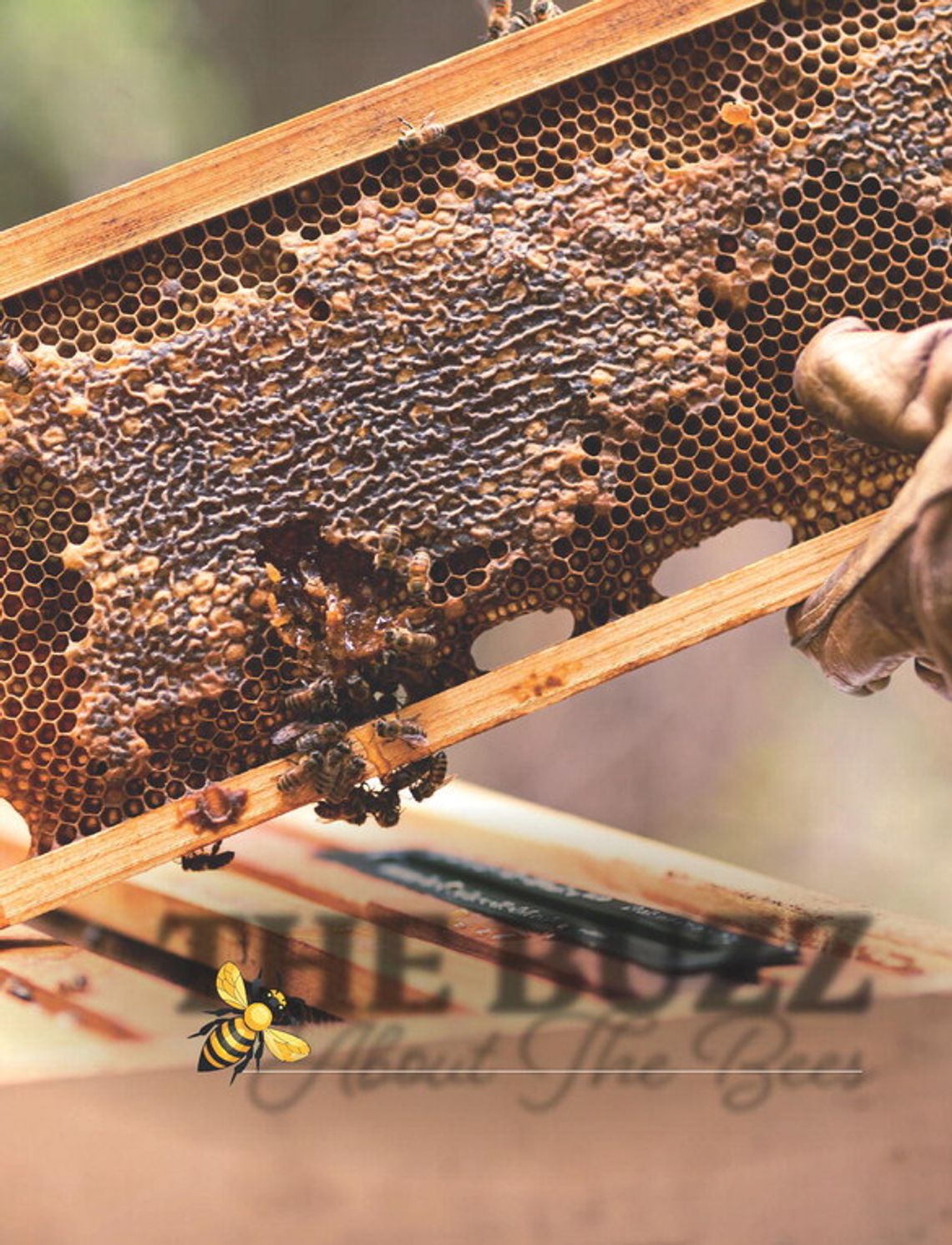About The Bees
By Susan Yerkes
Bees are booming in Texas. The Lone Star state is home to about 10,000 beekeeping operations today – a stunning jump from just 1,900 in 2012.
fter all, who doesn’t love bees? For thousands of years, they’ve been symbols of good fortune, wealth, or happiness in many cultures. Ancient Egyptians were keeping bees 2,500 years ago. The Aztecs and Mayans traded honey and beeswax. European honeybees were brought to North America in the 1600s. Bees are valued for much more than honey and wax. Their most vital role is as the primary pollinators of flowering plants in the wild. They also pollinate about 30 percent of fruit, vegetable, and nut crops in the U.S.
SAVE THE BEES
According to the Texas Department of Parks and Wildlife, bees contribute $14 billion annually to crop yield and value.
In recent years, massive die-offs – including one last winter - have rocked the beekeeping world and brought more attention to the importance of bees. “Save the Bees” campaigns have created more interest in beekeeping. Beehives started cropping up in unexpected places – the George H.W. Bush Library, NASA, the White House, airports, vacant city lots and hotel roofs. Beekeeping is most prevalent in Texas’ wide-open spaces.
“We have a lot of urban or city people moving out here, and they want to be beekeepers,” said Tom Shaughnessy, owner of Cedar Hollar Services in New Ulm. Shaughnessy leases, services, and sells beehives and solitary bee and bird boxes. He also creates wildlife management plans, and markets Cedar Hollar Honey.


NEW ULM HONEYBEE JUBILEE
Shaughnessy is busy as a bee this spring.
Besides his Cedar Hollar work, he’s the committee chair for the New Ulm Honeybee Jubilee on May 3. It’s a free, family-friendly celebration promoting honeybees, honey and nature in general, with bee-themed shopping, arts and crafts, food trucks, kids’ activities, educational presentations, raffles, and even a Honey Wine Tasting.
It’s a big event for the little community, drawing 7-800 visitors.
“Bees are so fascinating, people want to get involved to just learn about them. The big increase in the number of hobbyist beekeepers helps the bee population. One bee box may have 15 to 20,000 bees in it, so the honeybee population is growing,” Shaughnessy said.
TAX BREAKS
However, the biggest boost to the Texas bee population came in 2012, when the Texas legislature added beekeeping to the list of land uses for agricultural valuation, giving beekeeping landowners significant property tax breaks.
The rules vary from county to county. In Austin County, a minimum of six hives are required on 5 acres, up to at least 12 hives on 20 acres to qualify for ag value.
BEES AS LIVESTOCK
But there’s more to beekeeping than buying a few bee boxes, ordering some bees, or catching a swarm of bees for your hive – another service some professional beekeepers offer. A single new hive may cost $200, sting-resistant clothing and gear another $200, and a package of bees may run $250. That’s just the beginning.
“Keeping bees can be very challenging,” Shaughnessy says.” Honeybees are not pets. At the end of the day, they’re livestock, and we have to keep our livestock healthy.” Harsh weather, pesticides and Varroa mites, which wipe out whole bee colonies, are among the challenges.
Shaughnessy advises prospective beekeepers to join a club where they can meet and learn from experienced “beeks.”
“Bees are so fascinating, people want to get involved to just learn about them. The big increase in the number of hobbyist beekeepers helps the bee population.”

BEE HANDLER WITH FRAME. PHOTO CREDIT LINDSAY THIBAULT

HONEYBEE HIVES AND WILDFLOWERS. PHOTO CREDIT LINDSAY THIBAULT




Comment
Comments